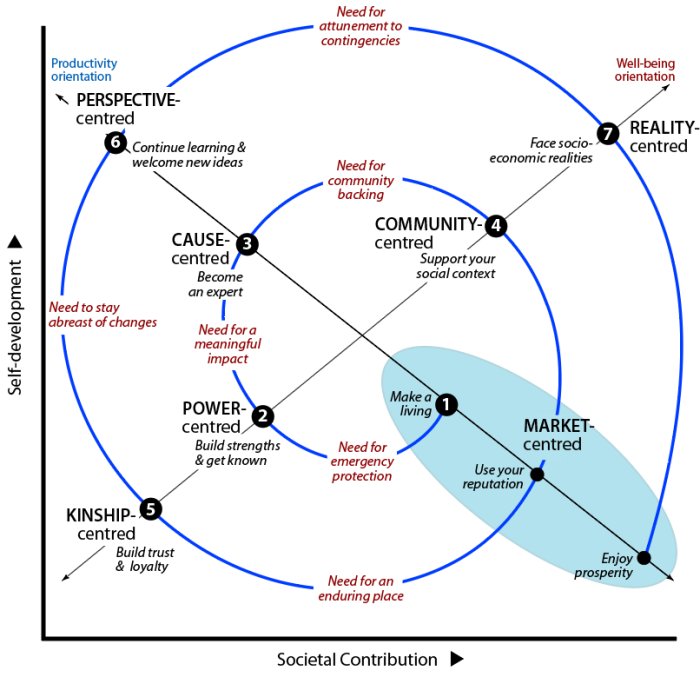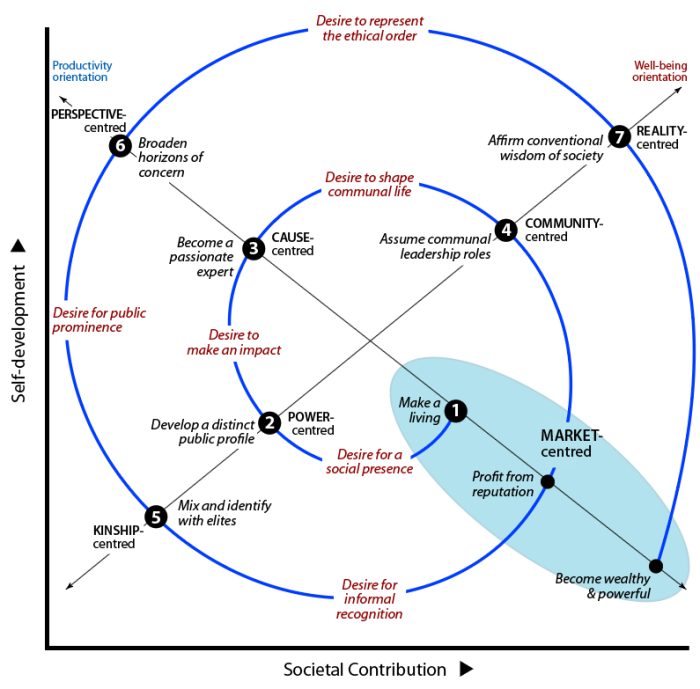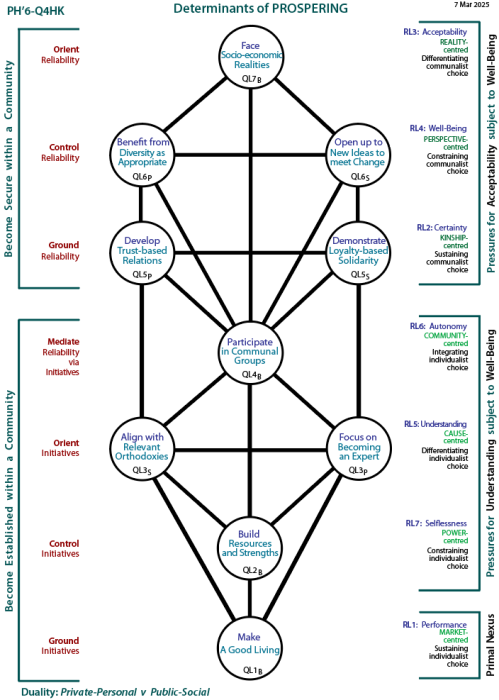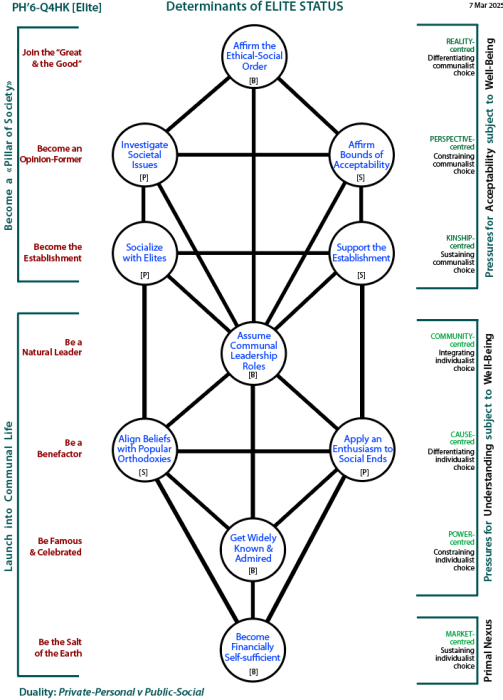Preview: Developing Social Status
Getting What you Want
Getting what you want in society is dependent on developing your social status. The relevant has been developed, and we can use it to construct the Spiral trajectory that deals with developing social status.
Here it is in diagram form :

The , having been plotted, are viewed as . Each mode consists of a distinctive set of maxims for progressively and appropriately . They provide guidelines for handling oneself and others and using social conventions.
The spiral trajectory is a strenuous process in which each mode becomes a Stage of development. Progress through these Stages builds status by cumulating mode values, but this process can stop at any Stage if status and prospering is judged sufficient.
Status is grounded in , which is market-centred. An indigent person unable to work has no status in the eyes of others. In the first Cycle, you seek to move beyond earning now to becoming socially secure through winning esteemand developing a standing in society: initially by (i.e. power-centred), then by in something meaningful (i.e. cause-centred), then by (i.e. community-centred). At this point, your plays a big part in sustaining and enhancing your earning capacity, and it must be carefully protected.
The second Cycle, involves protecting your prosperity in the future given the likelihood of surprising challenges or disasters. This is possible initially by with all whom you deal with (kinship-centred), then by to deal with changes (perspective-centred), and finally by (reality-centred) so as to fend of dangers and seize opportunities. As a result, your market-centred approach will be much strengthened and you will be able to .
The driver for evolutionary progression through the 7 Stages is primarily inner ambition for social advancement. However, factors like external pressure (e.g. from family), obstacles that become creative challenges, and degeneration of a current mode can all contribute.
Becoming an Elite in Society
If you want to become one of society's elites, then the modes and Stages have slightly different requirements. The Spiral looks like this:

Note the following differences:
-
Transitions are driven by desire, not need, because there is no need for a person to become one of the elites.
-
Cycle-1 is about developing a public profile enabling influence, and Cycle-2 is about becoming embedded in the leadership of society.
-
There is a greater focus on profit and wealth with the end-point changing from "" to "".
-
There is a greater degree of passion, public prominence, and a seemingly irresistible urge to separate from the masses and lead them or at least affect their fate.
-
Elites often know that societal conventions and practices are harmful, but that is their context and they never break ranks. Sometimes, after retiring from public life and losing all influence, an elite will tell the truth in a book that, after an initial flurry of interest, is quickly buried and forgotten.
Below is a comparison of the and for .
Better viewing: Use browser zoom if needed.

|

|
Fears
For both the man-in-the-street and the elite, fear plays a major role:
| Social Status Fear | Elite Status | |
|---|---|---|
| Stage-1 | Poverty | Distraction |
| Stage-2 | Weakness | Obscurity |
| Stage-3 | Over-specialization | ? |
| Stage-4 | Exploitation | Competition |
| Stage-5 | Isolation | Betrayal/Exclusion |
| Stage-6 | Change | |
| Stage-7 | Unpreparedness | Exposure |
Originally posted: 2-Apr-2025.